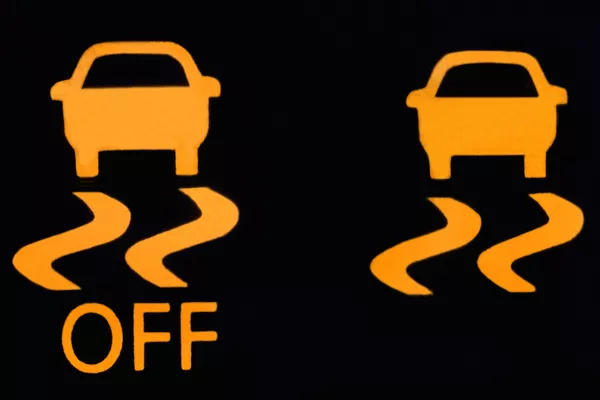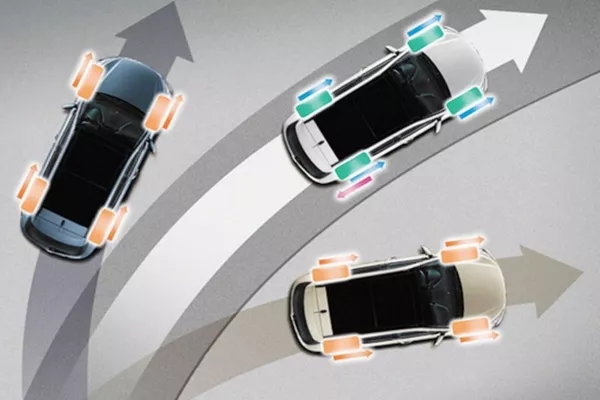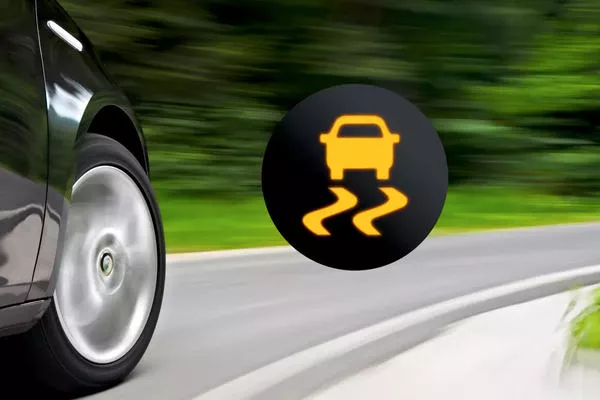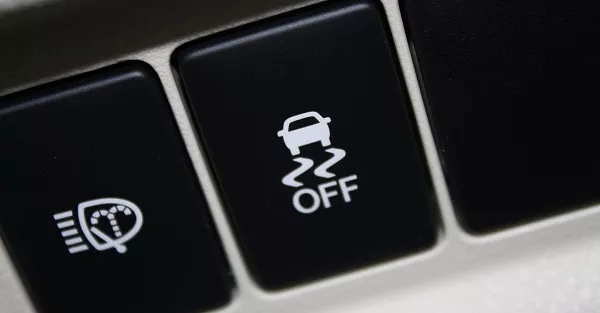Having a car is more than just about driving and car maintenance. As a car owner and driver, you should understand your vehicle and its features. This includes the different car terminology like anti-lock braking system, electronic stability control, electronic brakeforce distribution and many more.
For this article, Philkotse.com will discuss traction control – its role, importance, how it works, and why a vehicle has it.
1. What is traction control?
Traction control is a system in your car and is one of the active safety features of the vehicle. It helps in preventing loss of traction of the wheels during road drives. It activates when the throttle input and engine torque doesn't match the driving surface.
To apply traction to the wheels of the vehicle, traction control will constrict the supplied power to the car’s wheels. This stops the wheels from spinning. It uses all the available traction on the road if the car accelerates on road surfaces with low friction.

Traction control is a system in your car and is one of the active safety features of the vehicle
2. Traction control system
As stated above, TCS is a car’s active safety feature which comes as a standard in modern car models. It's the electronic stability control or ESC's secondary function. ESC, on the other hand, is the vehicle's system that activates when the car speeds – preventing the tires from slipping.

Traction control activates when the throttle input and engine torque doesn't match the driving surface
3. How traction control works
Almost all cars already have traction control unless you’re going to drive a really old car. Most drivers (if not all) don’t realize how traction control works even if it is already in operation and is assisting safe driving.
The components and operation of TCS are quite similar to that of the anti-lock braking system (ABS). The traction control system has three components; the wheel speed sensor, hydraulic modulator and electronic control unit or ECU.
The wheel speed sensor monitors the speed of rotation of the car’s wheels. The electronic control unit (ECU) is responsible for monitoring the wheel activity and gathers the data coming from the speed sensors of the wheels. And lastly, the hydraulic modulator is responsible for driving the brakes.

Most drivers don’t realize how traction control works even if it is already in operation and is assisting safe driving
The ECU checks if one of the wheels rotates faster than the rest – which is an indication that the specific wheel is losing traction. In this case, the ECU kicks in to control the rotation of the problematic wheel then sends a signal to the hydraulic modulator to pump the brake to that particular wheel in quick successions.
In modern cars, the TCS and ABS are often classified as one unit and that TCS is an add-on to the setup of the anti-lock brake system.
>>> Read more: Top 7 modern driver assist features in cars today
4. Importance of traction control
Not everyone is aware of how traction control helps drivers in especially when driving on certain road conditions and during bad weather conditions. To give you an idea, here are the following benefits and importance of TCS.
It allows drivers to drive safer during bad weather conditions
During bad weather conditions, TCS comes handy. Drivers with really old cars (those that don’t have traction control system) need to feather the acceleration pedal to prevent wild spinning of the wheels on the tricky road. By doing so, they were able to speed up without losing control and grip.
But today, modern cars are already equipped with the TCS which allows drivers to build speed under control even in bad conditions that involve snow, ice, or rain and on any road surfaces that provides little to no grip. It helps drivers by limiting the supplied power to prevent wheel slip.

During bad weather conditions, TCS comes handy
TCS is more beneficial to drivers who often drive on low-friction or slippery roads such as icy, wet, poorly maintained or loose pavements. It is also most helpful when drivers accelerate up a hill with a gravelly or loose road surface.
Or, hit a patch of the slushy road causing the car to slow down as the wheels lose traction, and/or when the driver speeds up at a green light on an icy or slippery road with traffic approaching from behind.
>>> Also check: 7 must-have active safety features in modern car
It prevents the vehicle from sliding off the track
The traction control system allows drivers to exercise better control over their vehicle. Without TCS, the vehicle can slide off the track because it minimizes the risk of losing control of the rear end while speeding up and oversteering when driving around a corner.
It helps drivers maintain control and stability
When the car loses grip and/or starts to slide or skid, the traction control system will help drivers maintain its control over the vehicle. The TCS activates and will shift the power from the slipping wheel to the wheels that still have a grip on the pavement.

When the car loses grip and/or starts to slide or skid, the TCS will help drivers maintain its control over the vehicle
5. How effective is traction control?
Different tests have been conducted to show if the traction control is effective in reducing wheel slip of the car when accelerating on low-friction road condition. However, the effects are more noticeable in cars with four-wheel drive compared to cars with front-wheel drive.

Different tests have been conducted to show if the traction control is effective
The study showed that TCS which incorporates engine power reductions to slipping wheels are lined with improved stability. But for the brake-only systems, it is suitable for improving the acceleration performance of the car.
Because traction control system is often packaged together with electronic stability control (ESC) and anti-lock braking system (ABS), it is reasonable to conclude that driving a car that has these three safety features significantly reduce the risk of a fatal crash for up to fifty percent.
6. How to identify if there is a problem with the traction control system?
Knowing the symptoms of a dysfunctional traction control system will help you in identifying the problem as early as possible. It will also allow you to fix the problem before it gets worse.

Knowing the symptoms of a dysfunctional traction control system will help you in identifying the problem as early as possible
The most common sign that there is a problem with the system is when the traction control warning light illuminates briefly after you start the engine. This can happen because of a faulty ABS, bad wheel speed sensor, driving with a mini spare tire or low air pressure.
Take note that you can still drive the car even if there’s a problem with the system but be very careful when driving on low-friction and slippery roads. If you suspect that there’s a problem with your vehicle’s TCS, it’s best to have it checked with your local dealer or trusted mechanic as early as possible.
Recent posts
- So you know: What is Electronic Braking System (EBS)? May 18, 2019
- Driving 101: 5 steps to safely drive through sharply curved roads Feb 28, 2019
- 12 safety features of modern cars you should understand Jul 26, 2018
- Top most essential car safety features to have in your car Jul 09, 2018
- How to drive safely in heavy rain: 5 essential tips Dec 05, 2017












